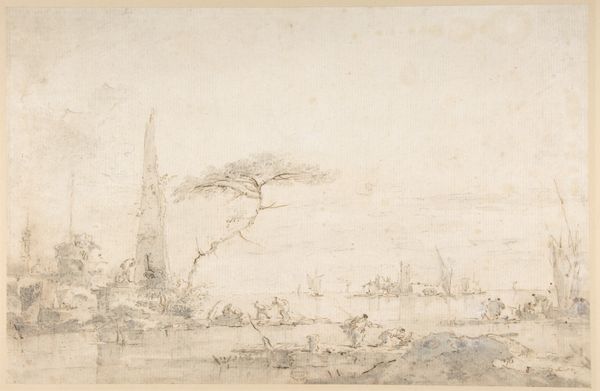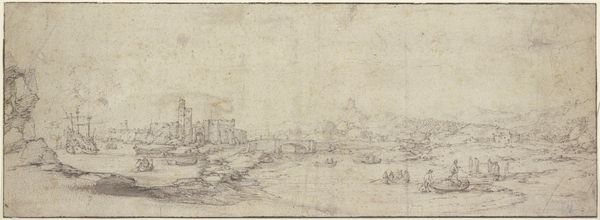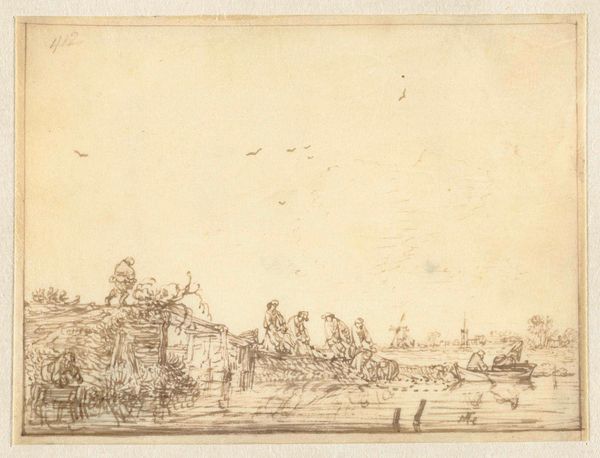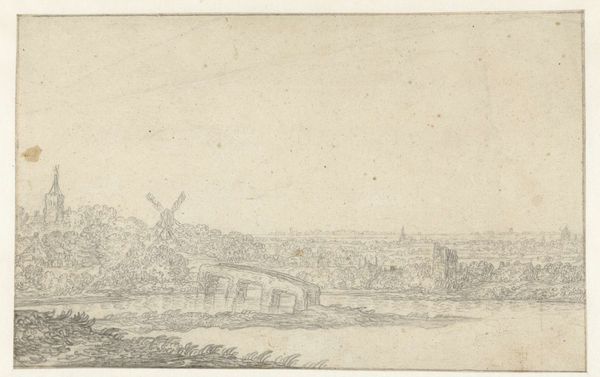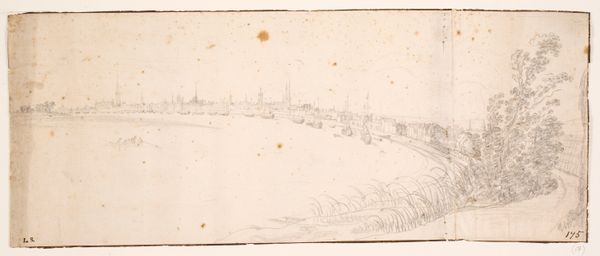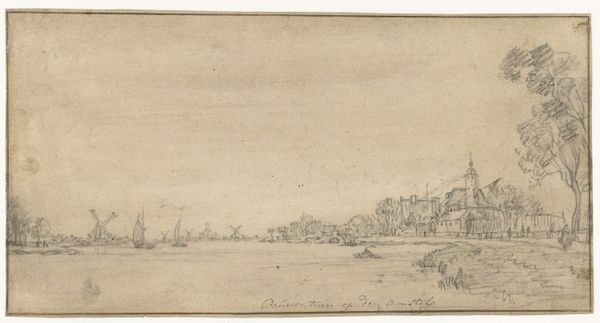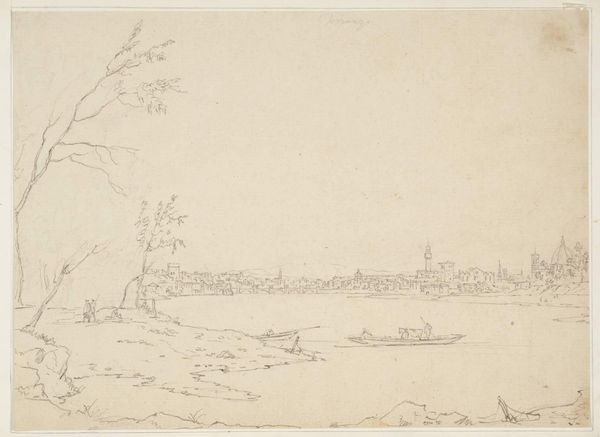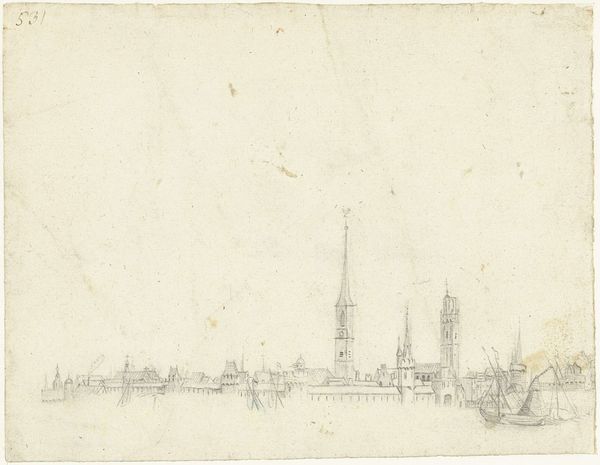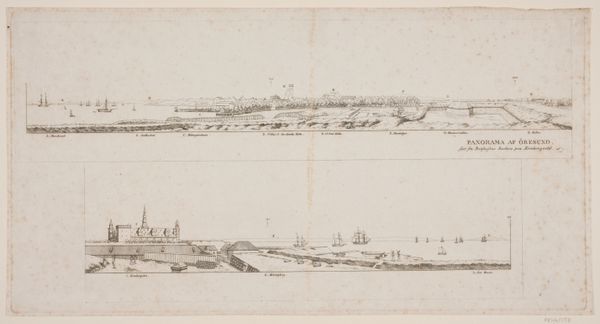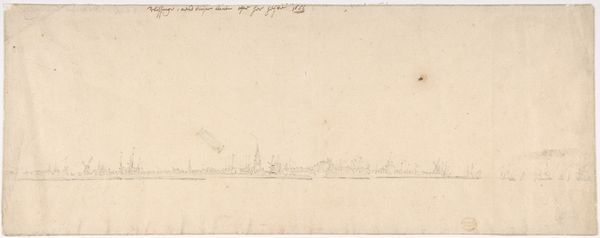
Study for View of Westminster Hall and Bridge, from Microcosm of London c. 1810
0:00
0:00
drawing, print, paper, graphite
#
photo of handprinted image
#
drawing
#
aged paper
#
toned paper
#
light pencil work
# print
#
old engraving style
#
hand drawn type
#
paper
#
fading type
#
england
#
water
#
graphite
#
watercolour bleed
#
watercolour illustration
#
watercolor
Dimensions: 187 × 260 mm
Copyright: Public Domain
Editor: This delicate drawing, "Study for View of Westminster Hall and Bridge, from Microcosm of London," created around 1810 by Augustus Charles Pugin, gives a hazy impression of the city. I’m really struck by the subdued tones of graphite and watercolour. How can we understand Pugin’s London through the lens of the materials he employed? Curator: It's a fantastic question. Looking at Pugin's choice of graphite and watercolour on paper, we must consider the social context of these materials. Paper, even "toned paper," was becoming more accessible thanks to industrialization. What does the seemingly simple act of using these specific, relatively affordable materials suggest about the intended audience and the role of this study? Editor: That's a great point, it pushes me to consider who could even engage with art at this point. Perhaps, the sketch implies a burgeoning market that involved art consumption moving beyond elite circles? Curator: Precisely! Consider too, the "old engraving style." Pugin wasn't just representing Westminster; he was participating in a wider network of printmaking and distribution. These prints were commodities. Who benefitted most from the production and sale of these images and how did the labor that went into each copy impact their value? Editor: So it is almost less about the artistic gesture and more about who had access to art making practices. Curator: Indeed, by understanding the means of production, we understand the social fabric interwoven into Pugin's study. The ‘hand-drawn type’ is also relevant because we begin to understand art that moves away from classical, painterly work to enter new forms of industrial craft. What we may term today illustration. What initially seems like a mere study suddenly transforms into a reflection of industrializing London, mass culture and who had access to engage in its making. Editor: It's really interesting to realize how something as seemingly simple as the choice of material and print style, reveals a shift in class dynamics of that period. I have to rethink how labour, materiality and consumption is what to consider first!
Comments
No comments
Be the first to comment and join the conversation on the ultimate creative platform.

